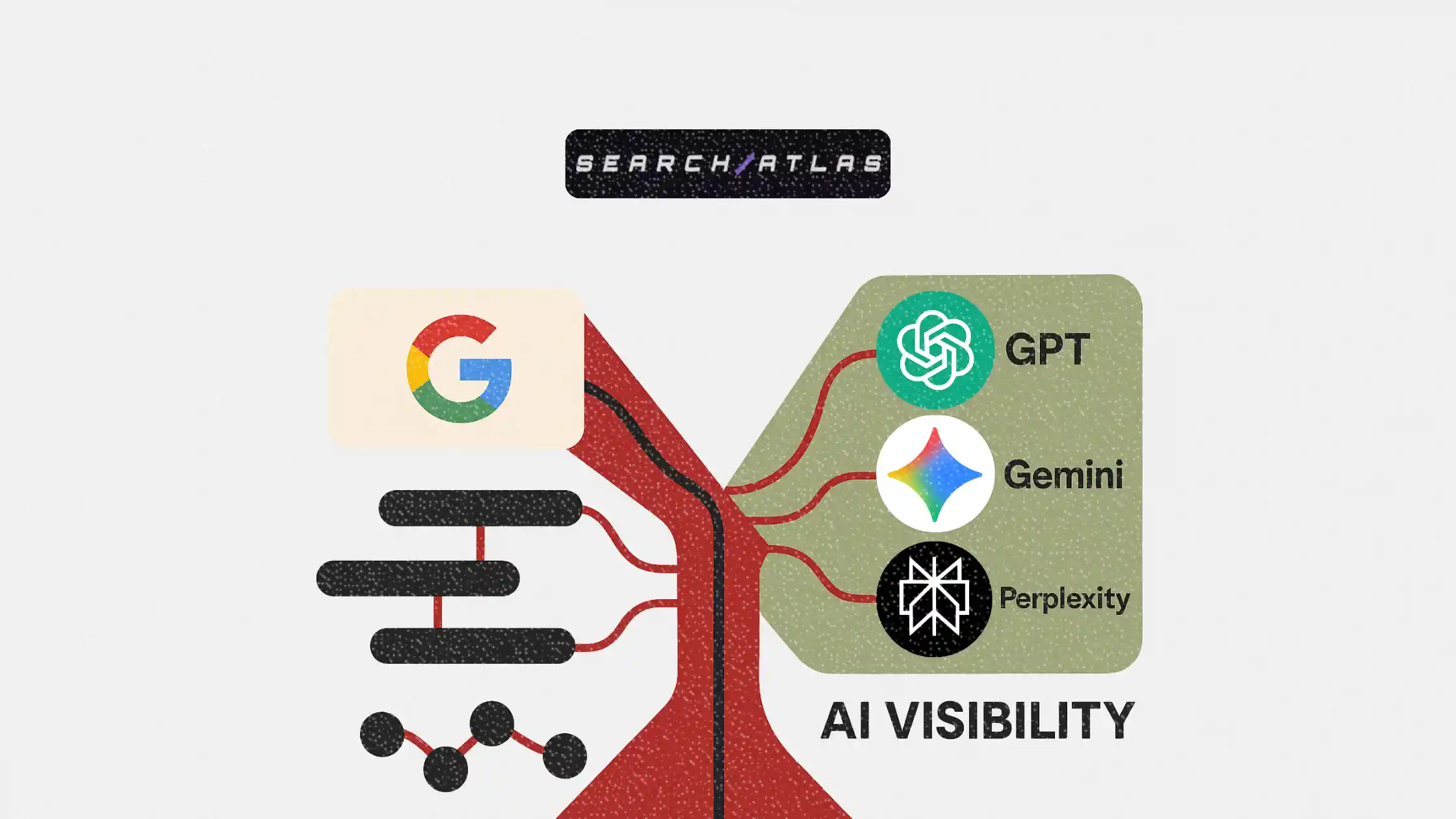AI search diverges from Google and marketers can’t ignore it
New research shows major differences between LLMs and Google search results

Marketers have spent decades optimizing for Google. But a new study suggests that traditional SEO may no longer be enough. Large language models (LLMs) like GPT, Gemini, and Perplexity are surfacing different answers and different sources compared to Google’s top results.
That divergence could reshape how brands show up online. Instead of just optimizing for the SERP, marketers now need to factor in how AI assistants perceive and present content.
This article explores the study’s key findings, how each AI model differs from Google, and what marketers should do next to stay visible in both worlds.
Short on time?
Here’s a table of contents for quick access:
- Key findings from the LLM vs Google study
- Why LLMs produce different results than search engines
- What marketers should know about optimizing for AI visibility

Key findings from the LLM vs Google study
A recent study analyzed 18,377 semantically matched queries to compare how well LLMs align with Google search results. The models included Perplexity (which uses live retrieval), OpenAI’s GPT (relying on internal knowledge), and Google’s own Gemini (using a selective citation approach).
The findings were clear. AI models generate a new layer of search visibility that rarely overlaps with Google’s results at the URL level.
Here’s the breakdown:
- Perplexity: 43% domain overlap, 24% URL overlap. Highest alignment, thanks to real-time web retrieval
- OpenAI GPT: 21% domain overlap, 7% URL overlap. Relies on reasoning, not retrieval
- Google Gemini: 28% domain overlap, 6% URL overlap. Uses selective, citation-driven results
Even the best-aligned LLM, Perplexity, matched fewer than 1 in 4 Google URLs. That’s a major visibility gap, especially for brands focused on organic reach.

Why LLMs produce different results than search engines
The study uncovered two major drivers behind this divergence:
- Retrieval vs reasoning: Models like Perplexity actively pull from live sources, which makes them more similar to Google. In contrast, GPT and Gemini synthesize answers from internal knowledge and selected sources. This means they often skip over top-ranking pages entirely
- Citation behavior: Google’s citations are result-based. LLMs tend to prefer semantically clear, factual, and well-structured content regardless of Google rank
If your content ranks well on Google but lacks clear structure or semantic depth, it might not show up in AI-generated responses at all.

What marketers should know about optimizing for AI visibility
SEO isn’t dead, but it is splitting. LLM visibility is emerging as its own performance metric, and ignoring it could mean missing the next wave of brand exposure. Here’s how to stay ahead:
1. Track LLM visibility alongside Google rankings
Think beyond the SERP. Start measuring how often your brand appears in Perplexity, GPT, and Gemini responses. Tools and custom scraping workflows can help monitor brand mentions, citations, and position within AI-generated answers.
2. Prioritize semantic clarity and structured content
AI models favor pages that are fact-rich, clearly scoped, and topically focused. Use structured data, schema markup, and precise language. Fluffy language will not perform well. LLMs prefer precision over persuasion.
3. Benchmark across multiple platforms
A single visibility score is no longer enough. Brands should compare how often they appear across AI models and Google on a monthly basis. This can help spot gaps and opportunities before competitors take over.
4. Build with LLMs in mind, not just search crawlers
If AI tools are becoming the new front door to discovery, brands must ensure their content is easy for LLMs to parse and cite. This includes:
- Using question-based headings
- Summarizing key points early
- Making data and source links explicit

As AI chat tools become the default interface for discovery and research, brands that focus solely on traditional search rankings risk falling behind. The game is no longer just about showing up on Google. It’s about being recognized, cited, and trusted by AI systems that interpret content differently.
Marketers who adapt now can secure a visibility edge in a fragmented search landscape. Those who don’t may find their content disappearing from view, no matter how well it ranks.






